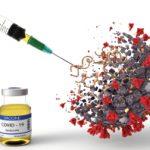The placebo effect is, however, more than just mind over matter. Functional magnetic resonance imaging demonstrates that placebos reduce activity in the dorsal anterior cingulate cortex, the thalamus and the mid and anterior insula, regions of the brain that are activated by painful stimuli. The placebo effect is likely mediated by multiple neurotransmitters, including endogenous opioids, and the effect can be partially reversed by naloxone.11
Placebos & Modern Medicine
I can’t think of a single person who has explicitly prescribed a sugar pill. That is not to say, however, that the placebo has disappeared from the practice of modern medicine. In 2008, a survey was conducted of 600 internists and 600 rheumatologists regarding their attitudes toward prescribing placebo therapies. Although actual sugar pills were rarely used, more than half of the respondents admitted to having suggested vitamins, over-the-counter analgesics or other medications they did not believe would directly affect the underlying pathophysiology of the patient’s diagnosis. In the majority of cases, these medications were not explicitly described as a placebo; they were described instead as “a medicine not typically used for this condition, but one that might benefit you.”12
In their discussion, the authors of this study note, “The desire to promote positive therapeutic expectations among patients is prevalent among the surveyed physicians. … Physicians might have multiple, possibly conflicting, beliefs and motivations for recommending active placebo treatments. They might believe that a given benign and safe treatment … might have some finite chance of a beneficial pharmacological effect, despite remaining unproved for the symptom or condition at hand; or, at the very least, such treatments might promote positive expectations in patients or to help the patient to feel like they are being taken care of. This perceived need to administer something in the absence of other proved effective treatments for chronic symptomatic conditions … might motivate physicians to prescribe placebo treatments.”
In other words, we are prescribing hope. A folk saying (misattributed variously to William Osler, Edward Trudeau and Hippocrates) says the role of the physician is “to cure sometimes, to relieve often, to comfort always.”13 In that spirit, I rarely try to dissuade my patients from taking glucosamine, coenzyme Q-10, ginseng, black seed oil or the host of compounds they ask me about in clinic. Over the years, I have learned it’s difficult to predict what a patient might find a comfort. As long as the cost is modest and the risk is low, I think many of these interventions are worth trying, at least for a limited time, even if I think it might just be a placebo.


